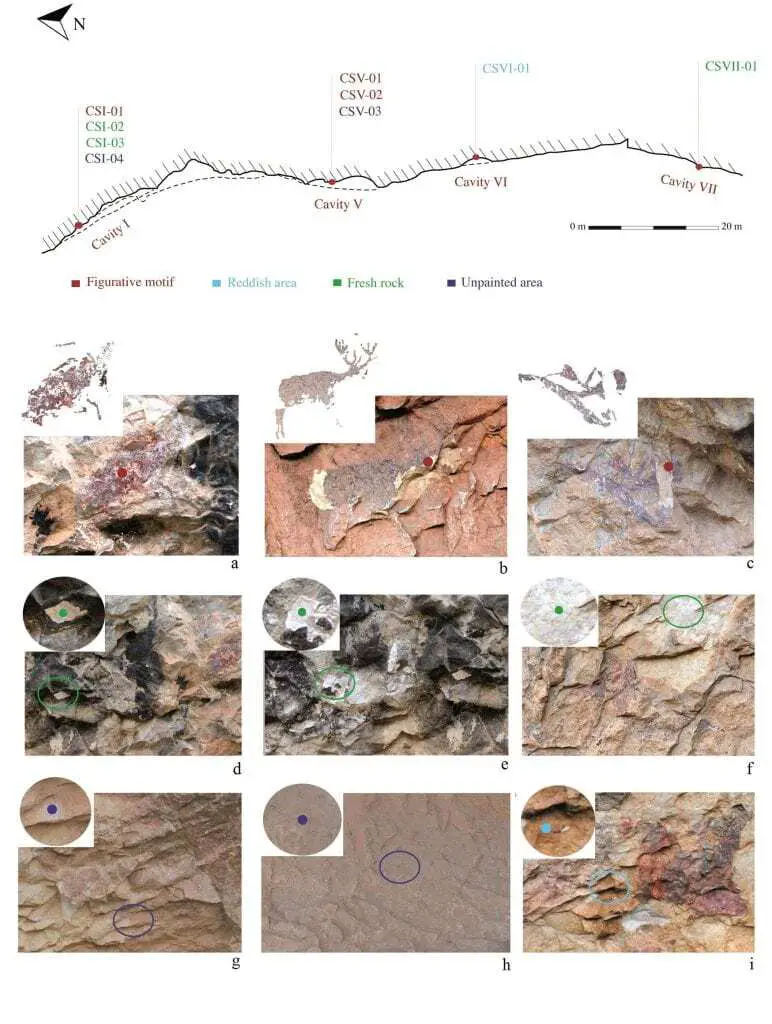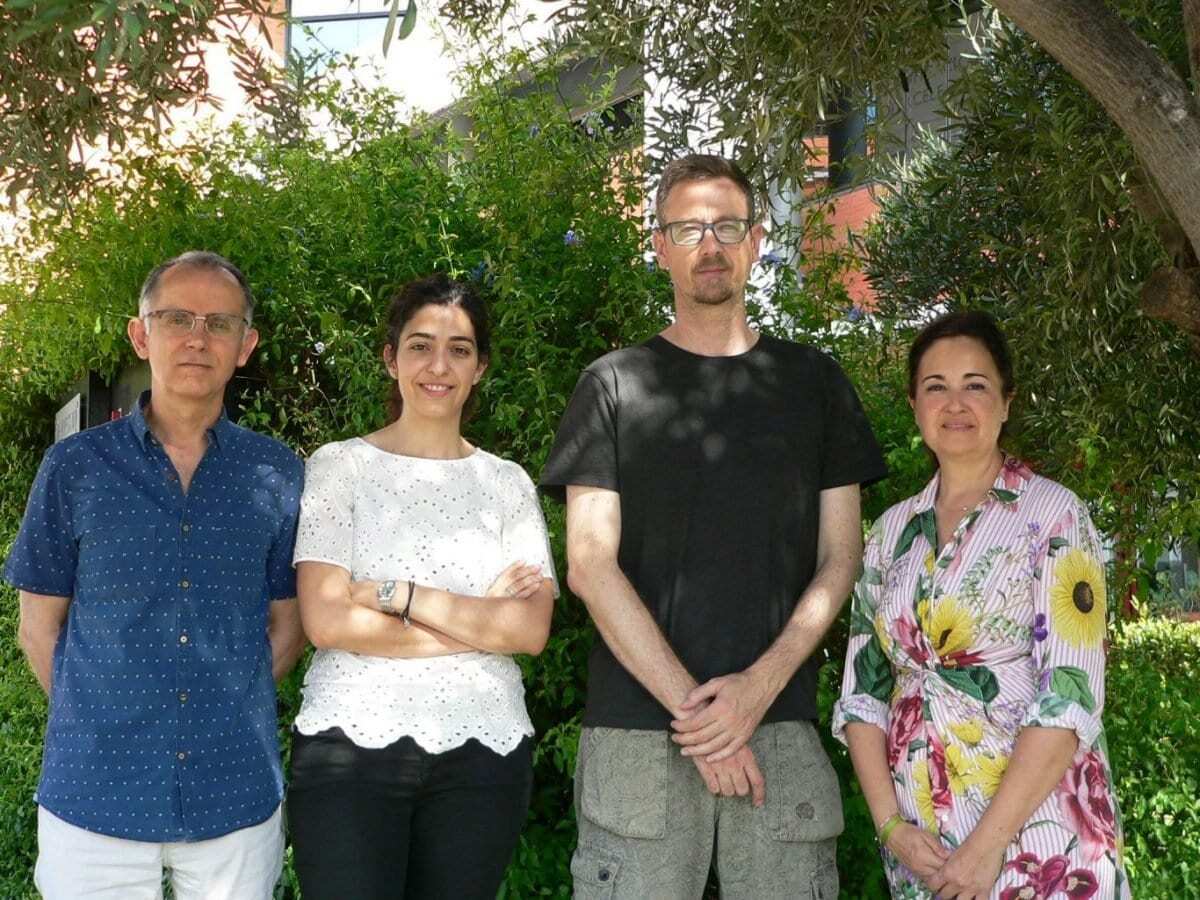The aim of the project was to identify the organic binding agents and the bacterial communities of the sites through omic technologies, that is, those that study the totality of genes, organisms or proteins.
It has been done through metagenomic techniques (science that studies the DNA of microorganisms, directly extracted from environmental samples) and proteomics (the massive biochemical study of proteins).
Thus, the proteomic analysis of pigment samples from three figures has allowed “to detect casein peptides of bovine origin in the samples analysed”, according to Clodoaldo Roldán, professor of Applied Physics and Electromagnetism at the University of Valencia and a researcher at ICMUV. “This finding allows us to hypothesise the use of animal milk as an agglutinating agent, thus opening the hypothesis that the societies that made these paintings practiced animal husbandry, thus situating themselves in a chrono-cultural framework typical of the peninsular Neolithic (VI-III). millennia BC)”, the authors say.
The research – in which the TRACES UMR 5608 laboratory of the Center National de la Recherche Scientifique de France (CNRS) and the company Darwin Bioprospecting Excellence, SL also participated –, has been developed with pigments from the Coves de la Saltadora shelter (Coves de Vinromà, Castellón), one of the most decorated sets of the Valltorta-Gassulla cultural park, a World Heritage Site by UNESCO.
“We performed the first metagenomic analysis, that is, microbial DNA, directly obtained from micro samples from three painted motifs (an archer, a goat and a deer) and from a set of ‘control’ samples corresponding to the wall in zones without pictorial motives. Metagenomics has provided us with the first description of the bacterial communities that colonise the patina of rock art and parietal support, and that could have a protective effect on the paintings”, according to the authors.
The composition of the pigments, that is to say, of the raw materials used during the elaboration of these paintings, is mainly composed of minerals based on iron oxides mixed with organic substances, which acted as binders, favouring their adhesion and resistance. Knowing these binders allowed us to understand the elaboration processes, and to favour the obtaining of radiocarbon dating, although, identifying and characterising these substances is complex due, among others, to the strong erosive process to which the Levantine shelters are subjected.
“Taking into account the open debate about the chronology and authorship of Levantine Art, our study provides objective grounds, compatible with a recent chronology for this graphic tradition, which could be linked to the first agricultural and livestock societies of the Iberian Mediterranean Arc”, according to researchers.

Levantine rock art
The Iberian Mediterranean arch houses a unique graphic manifestation in European prehistory: Levantine rock art, declared a World Heritage Site by UNESCO in 1998. At present, the number of rock shelters decorated with these graffiti exceeds a thousand, being the core of Valltorta-Gassulla (Alt Maestrat, Castellón) one of the most outstanding territories due to the number of documented sites and the richness and interest of its panels.
Levantine art is a pictorial tradition that is located in shallow shelters of the interior sierras. Its singularity, in clear rupture with all previous graphic manifestation, comes from its strong naturalistic and narrative component. These paintings represent economic and social activities – hunting, honey gathering or social conflicts – in which the male figure is praised in his role as hunter and warrior. The information potential of these paintings is enormous, and their study and documentation has the objective of knowing and characterising the author societies.
This research has been developed as part of the NEOSOCWESTMED project, a Marie Curie action developed within the framework of the seventh program of the European Commission, and within the “Projet Émergent 2016” program funded by the TRACES laboratory of the Center National de la Recherche Scientifique (CNRS) of France, in which ICMUV, I2SysBio and Darwin Bioprospecting Excellence, SL participate.
Header Image – Clodoaldo Roldán (ICMUV), Cristina Vilanova (Darwin Bioprospecting), Manuel Porcar (I2SysBio) and Sonia Murcia (ICMUV). (





